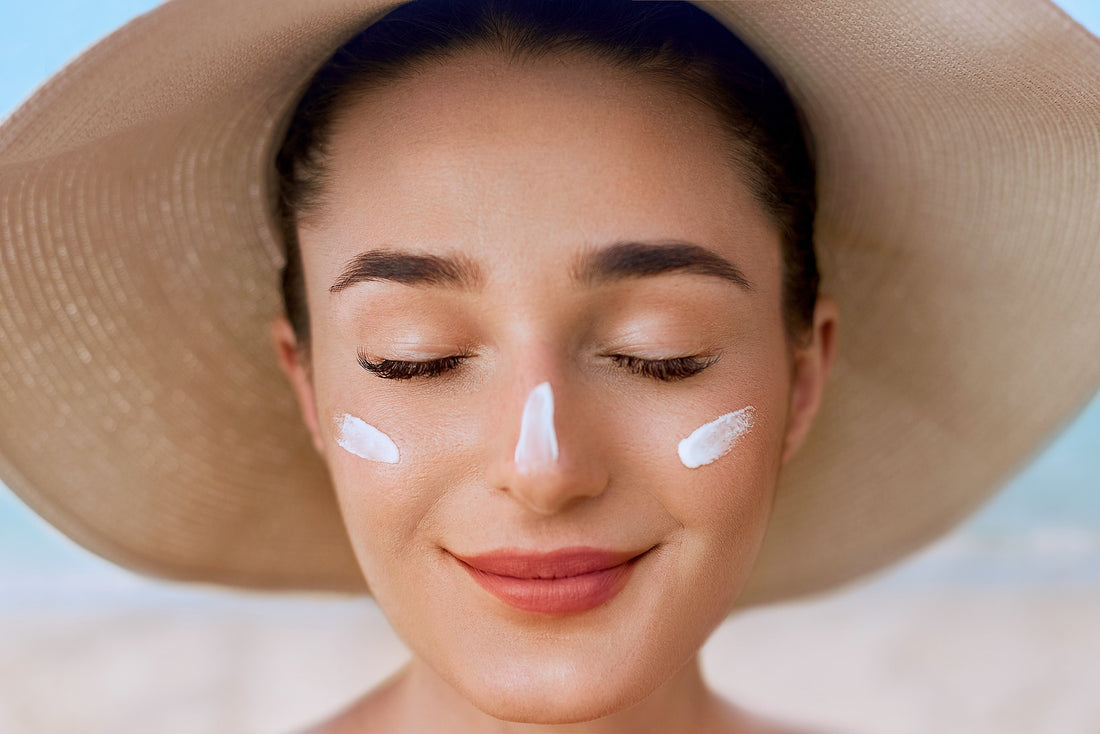You walk into your local drugstore on your way to the beach.
In the middle of the store is an aisle dedicated to the theme of the season --- and in July that means sunscreens by the dozen!
Baby sunscreen, sports sunscreen, scented and fragrance-free. 15 SPF all the way to 70 SPF.
With so many to choose from, you’re not sure which one you should buy.
You’ve heard sunscreen can help reduce your chances of developing skin cancers (1), but you’ve also noticed you tend to not feel so well when using certain kinds.
You turn the bottle over and take a look at the ingredients. Some of the ingredients look vaguely familiar, but the rest you can barely pronounce.
Stories begin to trickle into your memory of people having bad reactions to sunscreen, and it gets you thinking… Could it be that your sunscreen is making you sick?
If so, what can you do about it?
Read on to find out.
How Sunscreen Works
Why are we told to protect ourselves from the sun, anyway? Isn’t it a crucial part of the world we live in?
The sun provides warmth, light, and energy for things to grow and thrive. It also produces ultraviolet rays. These two categories, called UVA or UVB rays, can cause damage to your skin if you’re exposed to high amounts.
And these health concerns lead to the world of sun protection products. While ancient civilizations used natural elements like rice bran and lupine (2), commercial sunscreen products didn’t emerge until the 1940s.
Today, there are two different types of sun protection:
- Physical sunscreen or sunblock
- Chemical sunscreen or sunblock
So how does sunscreen work to protect your skin? When you apply a chemical sunscreen, compounds within the cream react when exposed to the sun. Instead of UV rays hitting your skin, the UV rays are turned into heat that is then released from your skin (3). The downside to this is that these creams usually only protect against one type of radiation, whether UVA or UVB rays.
On the flip side, a physical sunblock contains ground up particles of either zinc or titanium dioxide. These elements sit on top of your skin and create an actual barrier, reflecting the sun’s UV rays.
Symptoms of Sunscreen Allergy
When it comes to sunscreen, what are ways you can feel sick? Most manufacturers claim their sunscreens are nontoxic, with disclaimers that minor skin or eye irritations can occur.
That being said, you might be allergic to sunscreens if you develop symptoms (4) such as:
- Fever
- Chills
- Problems breathing
- Raw, blistering skin
- Hives
- Raised bumps
- Scaling or peeling
- Pain
- Swelling
- Bleeding
Risk Factors
Some people are more prone to side effects than others. If you’re someone who is already sensitive to topical products, you may be more likely to have an allergic reaction to sunscreens.
Also, if you have pre-existing autoimmune skin conditions like psoriasis or eczema, you’re more at risk for developing an allergic reaction.
If this sounds like you, the best next step may be to schedule an appointment with your primary doctor or dermatologist. If skin allergy symptoms persist despite treatment, you may be referred to a specialist.
Why Ingredients Matter
Research shows one of the ingredients commonly found in chemical sunscreen, oxybenzone, has been linked to hormone disruptions in children (6). It also has devastating environmental impacts, causing death to coral reef colonies and many aquatic fish (5).
Other studies have found a link to sunscreen use and vitamin D deficiency (7). This could be due to overuse or not enough sunlight in general. Vitamin D is an important hormone that helps support healthy moods, immune system, and bone strength.
What You Can Do
If you’re thinking your sunscreen is the culprit behind allergies or other negative health symptoms, there are some things you can do.
Rather than lathering on the topical sun protection, opt for protective clothing like:
- Wide-brimmed hats
- Long sleeve shirts
- Pants
- Socks
- Shoes
- Umbrellas
Pro tip: you don’t have to wear heavy fabrics for this to be effective. Wearing light, breathable cotton can help, along with reflective colors. Avoid dark colors that absorb more heat, or heavy fabrics like wool.
Wrap Up
Getting out into the sunshine does wonders for your health. Fresh air can clear your mind, and sunshine can elevate your mood.
And while some sun exposure is important, too much and too often can have the opposite effect. The sun gives off ultraviolet radiation, which can damage skin and other cells. Protection takes a variety of forms, and our ancestors utilized many natural elements to help keep their skin healthy.
Today, commercial sunscreen products offer chemical and physical protection from UVA and UVA rays. But not everyone responds the same way.
If your sunscreen makes you break out in hives, blisters, fever, or chills, stop and talk with your doctor and consider alternative approaches. Protective clothing like hats, pants, and long sleeve shirts generally work well..
Do you know someone who could benefit from a sunscreen alternative? Be sure to share this with friends and family today!
References & Disclaimers
1. https://www.ncbi.nlm.nih.gov/pmc/articles/PMC7759112/
2. https://jamanetwork.com/journals/jamadermatology/article-abstract/2471534
3. https://www.mdanderson.org/publications/focused-on-health/how-sunscreen-works.h27Z1590624.html
4. https://www.healthline.com/health/sunscreen-allergy#prevention
5. https://onlinelibrary.wiley.com/doi/abs/10.1111/jocd.12449
6. https://www.ncbi.nlm.nih.gov/pmc/articles/PMC7648445/
7. https://www.sciencedaily.com/releases/2017/05/170501102258.htm
✝✝This noted statement is based on independent research and is not necessarily the opinion of the author
